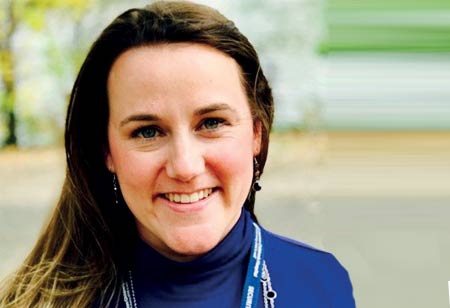Thank you for Subscribing to Healthcare Business Review Weekly Brief

Pediatric and Primary Care Healthcare Challenges
Healthcare Business Review
As most of us know, in March of 2020, pediatrician and primary care offices across the US saw a drastic drop in patient visits. During those early days of the pandemic, stay at home orders resulted in families postponing routine well care, while routine childhood illnesses were reduced thanks to measures including social distancing, masking and remote schooling.
The reduction of visits had immediate financial effects on physicians with eight out of ten pediatricians responding to an American Academy of Pediatric survey in April 2020 reporting they had decreased their office hours, six out of ten reporting they had closed some offices or reduced services, and most reporting they had increased their utilization of telehealth.
Throughout this time, physicians had to make tough decisions, with many laying off and/or furloughing staff in order to preserve cash. The US Bureau of Labor Statistics reported a staggering 1.4 million healthcare jobs lost during April of 2020, mostly in ambulatory healthcare services.
Fast forward to the fall of 2021, and while pediatric primary care practices have generally rebounded financially from the early effects of the pandemic, the challenges have continued. And although the desire to return to normalcy has been strong, with Delta becoming the dominant variant across the US, recommendations reverted back to more stringent personal protective equipment in healthcare facilities. Throughout this period, many organizations continuously revamped practice operations including new processes such as offering separate spaces for well and sick visits, implementing virtual or telephone check ins, developing parking lot flu vaccinations and offering COVID testing services.
Reducing the burnout among existing staff will be paramount to the long-term ability to provide care to patients
As normal community activities, including in-person schooling, have resumed, so has the need for COVID testing, sports clearances, and routine well visits. Even more challenging has been the growing behavioral health needs among young patients. The number of children experiencing mental health emergencies has increased so rapidly that the American Academy of Pediatrics, the American Academy of Child and Adolescent Psychiatry and the Children’s Hospital Association recently declared the issue a National Health Emergency. These groups, comprised of more than 70,000 doctors across the US, report that the toll of isolation, uncertainty, fear and grief have resulted in a mental health crisis among young Americans.
In some areas, the combined issues above have led to record pediatric primary care visits, during a time when practices are struggling to find staffing.
Before COVID, pediatricians, nurses and medical assistants were already in short supply, and with the increasing demands on healthcare workers, the situation has gotten worse. Even in top ranked healthcare hubs such as Massachusetts, the shortages are being called one of the worst US healthcare labor crisis in history. This perfect storm of high patient demand and a shrinking workforce is adding to the overall burnout of clinicians and other healthcare workers and in some cases it has resulted in employees choosing early retirement.
With the recent FDA vaccine advisory panel endorsement for COVID vaccines for the 5-11 year old crowd, and the Biden administration’s plan to distribute the shots to 25,000 pediatrician offices across the country, pediatricians and their administrators are feeling pressure to ensure these patients are vaccinated. Many practice administrators are reporting what they consider to be unrealistic pressure to offer COVID vaccine clinics during a time when they have unfilled positions and extremely high visit and telephone volumes.
The importance of maintaining access to quality pediatric primary care cannot be overstated. With states such as Oklahoma already reporting a massive shortage of pediatricians, other solutions will need to be considered to address the issue. This could include the utilization of nurse practitioners, the expansion of student loan forgiveness programs or the ability to choose more flexible scheduling arrangements. For providers, this may mean a day at home offering telemedicine appointments, or a 3-day work week. For support staff, practices should consider partnering with local training programs, offering flexible work arrangements, or offering referral and hiring bonuses.
Reducing the burnout among existing staff will be paramount to the long term ability to provide care to patients. Aside from increasing salary and benefits, other ideas are to have fun team events such as in-office scavenger hunts, paint nights, individually wrapped food and snacks, employee recognition programs, and community participation or volunteer programs. Celebrating holidays or seasons can also break up the monotony of the week and provide staff with the opportunity to enjoy each other’s company. Providing stress management tools or small group discussions can also promote overall wellness.
As we move into 2022 and beyond, many of the processes and workflow changes we have experienced in primary care pediatrics over the past two years will remain. The industry will continue to require attentiveness to keep employees and patients safe against COVID and any additional variants. Even with these considerations, staffing will likely remain the biggest challenge that we face as an industry. Health care organizations will need to put an emphasis on improving their work culture to retain existing employees while implementing creative ways to recruit new employees.









